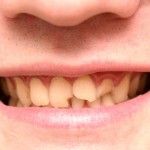
Traumatic dental injuries (TDI) are relatively common affecting between 20-30% of children and adolescents. Increased overjet has been shown to increase the risk and while a link between overweight/obesity and TDI has been suggested it remains controversial. The aim of this review was to assess the association between overweight/obesity and TDI.
Methods
Searches were conducted in the PubMed, ISI Web of Science, Cochrane Library, Scopus and Google scholar databases. Cohort, cross-sectional, or case–control studies with clear diagnostic criteria for TDI and nutritional status assessment were considered. Where possible, odds ratio (OR) adjusted for covariates was extracted. Study quality was assessed through Newcastle-Ottawa Scale (NOS). Only fair-to-good quality studies with NOS scores ≥4 were selected.
Results
- 17 studies involving almost 28,000 patients and 7400 TDIs were included.
- All but one of the studies was cross-sectional.
- There was a high degree of heterogeneity between the studies.
- The OR of TDI for overweight/obesity was 1.30 (95% CI, 1.11–1.53; P < 0.05)
- For primary teeth (3 studies) OR= 1.43 (95%CI 0.89 – 2.31)
- For permanent teeth (15 studies) OR= 1.29 (95%CI 1.19 – 1.40)
Conclusions
The authors concluded:
The risk of TDI among overweight/obese children is approximately 22% higher than among lean children and the causal association between these two conditions is plausible. The evidence that effective weight reduction programs in obese children increase their postural stability suggests that such programs could also be effective in reducing the risk for falling and consequent TDI development in overweight/obese subjects.
Comments
The possibility that childhood obesity is a risk factor for TDI was first highlighted by one of the authors in 1997 (Petti et al). This well conducted systematic review of observational studies finds that risk of TDI is higher in overweight/obese children. The authors highlight that there is also an association between bone fractures and obesity as they are more prone to falling. This year we have highlighted two other reviews of TDIs (see links), one shows that the link between increase overjet and TDI is a higher risk than overweight/obesity. The other did not demonstrate a links with socio-economic status.
Links
Corrêa-Faria P, Petti S. Are overweight/obese children at risk of traumatic dental injuries? A meta-analysis of observational studies. Dent Traumatol. 2015 Aug;31(4):274-82. doi: 10.1111/edt.12172. Epub 2015 Apr 10. PubMed PMID: 25864932.
Petti S, Cairella G, Tarsitani G. Childhood obesity: a risk factor for traumatic injuries to anterior teeth. Endod Dent Traumatol 1997;13:285–8.
Dental Elf – 27th Jan 2015 – Increased overjet: increases risk of dental trauma suggests review

When we designed our study 18 years ago, we were looking for risk factors for TDI and thought that lean children, rather than the obese, were at major risk for TDI because of their lively games and sports. We were really surprised to find the reverse!
Just few years later we found that mathematical models have been built based on our observation (see the elegant paper: Increased Risk for Falling Associated with Obesity: Mathematical Modeling of Postural Control) and that several studies (not all) on bone fractures and TDI confirmed our findings.
Now think just for a moment to the implications of this meta-analysis for dental healthcare workers: if it is true that DHCW’s are allowed to prescribe therapies and prophylaxis of oral diseases, if it is true that obesity is a risk factor for TDI in children, then it is true that DHCW’s are allowed to be nutritionists of obese patients (perhaps after having followed a good nutrition course)
See author comments on Traumatic dental injury with overweight/obese children? http://t.co/GzfoEXqgpn
Obese children at higher risk of traumatic dental injuries http://t.co/GzfoEXqgpn
Risk of traumatic dental injury higher in obese children http://t.co/GzfoEXqgpn
Traumatic dental injury associated with overweightness/obesity in children https://t.co/ZzjM0ZhtCJ
22% higher risk of dental trauma in obese children http://t.co/GzfoEXqgpn
Don’t miss – Obese children at higher risk of traumatic dental injuries http://t.co/GzfoEXHRgV
22% higher risk of dental trauma in obese children http://t.co/LbYhxvXNgt via @TheDentalElf